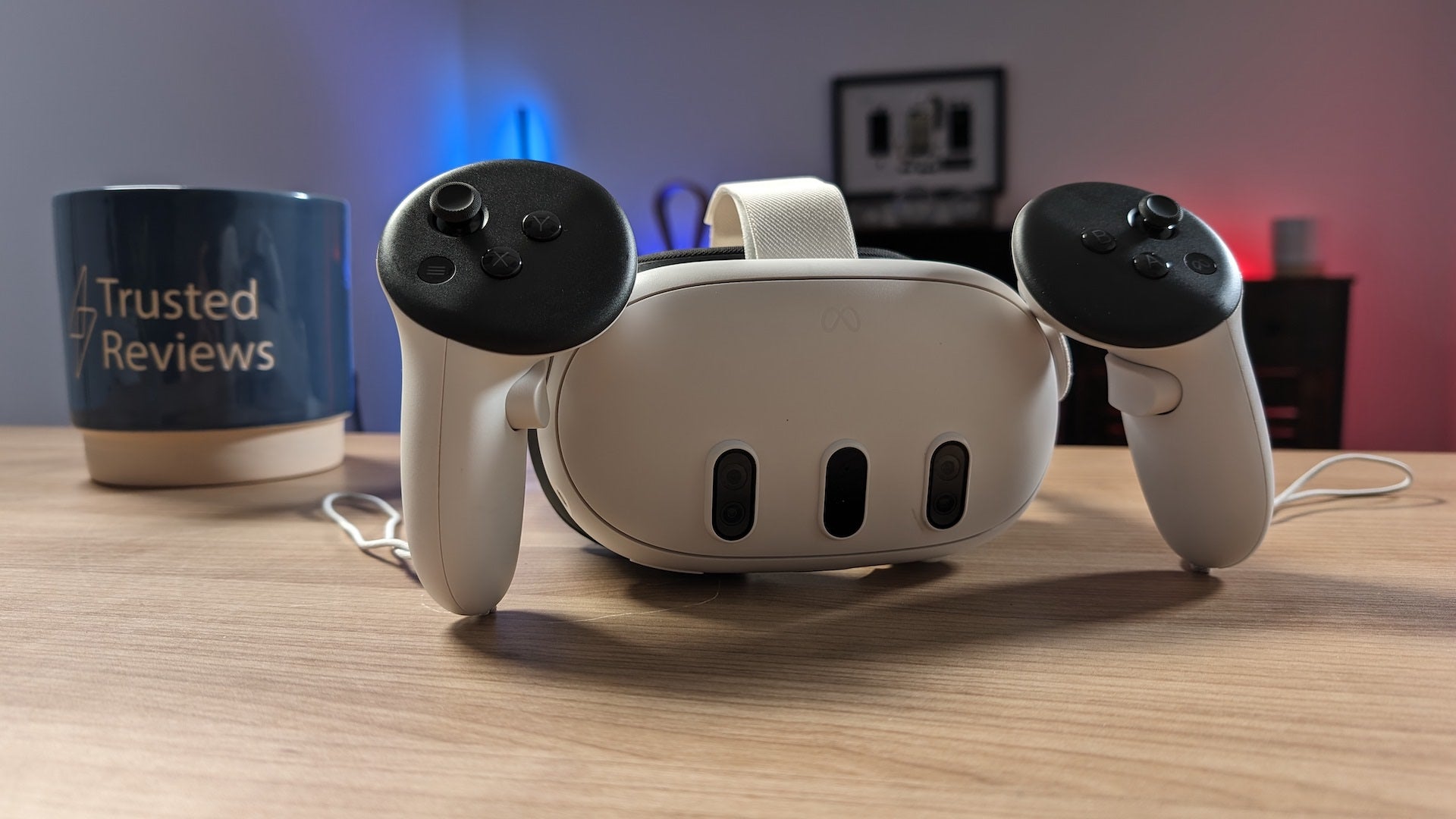
The Meta Quest 3S is framed as a more affordable version of the full-fat Meta Quest 3 mixed reality headset, but what’s the difference between the two reality-shifting gadgets?
While wowing with its Meta Orion AR glasses, the company also chose the Meta Connect keynote to debut a new, low-cost version of the Meta Quest 3 headset – slapping an S on the end and dropping the price significantly.
“Quest 3S is the best headset for those new to mixed reality and immersive experiences and for those who might’ve been waiting for a low-cost upgrade from Quest and Quest 2,” Meta said in a blog post to announce the launch, which also spelt the end of the road for the Quest 2.
There are plenty of similarities, including the same Qualcomm Snapdragon XR2 Gen2 processor with 8GB of RAM, while full-colour passthrough is also supported. The design is similar, all the Quest 3 experiences will be playable, and the same accessories come as standard.
Instead, there are only subtle differences between the two that might not make a big impact on your VR/XR experience. Here’s a brief overview of what’s different between the Quest 3 and Quest 3S.
Slightly different external design
The Quest 3 has three openings for camera lenses and sensors in the front of the display, while the Quest 3S offers six openings at eye level. It’s also slightly thicker than the Meta Quest 3, down to the differing display technology, with a size more in line with the Quest 2 than the Quest 3.

Meta Quest 3S has less capable displays
The Meta Quest 3 provides a brilliant display experience with a 2064 × 2208 resolution per eye and 25 pixels per degree, which amounts to a 4K+ resolution overall. The Meta Quest 3S defaults back to the Quest 2 resolution of 1832 x 1920 per eye with 20 pixels per degree.
The pancake optics that made such a difference to the image quality in the Quest 3 and also decreased the physical footprint, are also missing from the Quest 3S, with Meta opting for the fresnel lenses that were present in the Quest 2.
Our reviewer of the Quest 3 commented: “That significant size reduction is down to the inclusion of an upgraded pancake lens system, which is not only more compact than the fresnel-based system of its predecessor but delivers much clearer optics.”

Quest 3S has slightly better battery life
Those less advanced displays are less power-hungry, it seems, because Meta says the Quest 3S will last for about 2.5 hours on a single charge, while the Quest 3 lasts for 2.2 hours on average.
Now it’s also worth noting that this will depend on what you’re doing on the headset, as playing a demanding VR game will drain the battery quicker than running a few 2D apps, but if you do find you want to spend more time in the virtual world than what the headsets can offer, you’ve always got the option of investing in a first- or third-party battery pack to take things to the next level.
Quest 3S is much cheaper
The Quest 3S costs £289.99/ $299.99 with 128GB of storage, while a 256GB version will set you back £379.99/$399.99.
The cuts to the hardware make it a much cheaper option than the Quest 3. It’s £190/$200 cheaper than the original Quest 3 with 128GB of storage. There’s also a 51GB version of the headset that retails for more at £619/$650.
The post Meta Quest 3S vs Meta Quest 3: What's the difference? appeared first on Trusted Reviews.
from Trusted Reviews https://ift.tt/wtaqruO
via IFTTT



Comments
Post a Comment